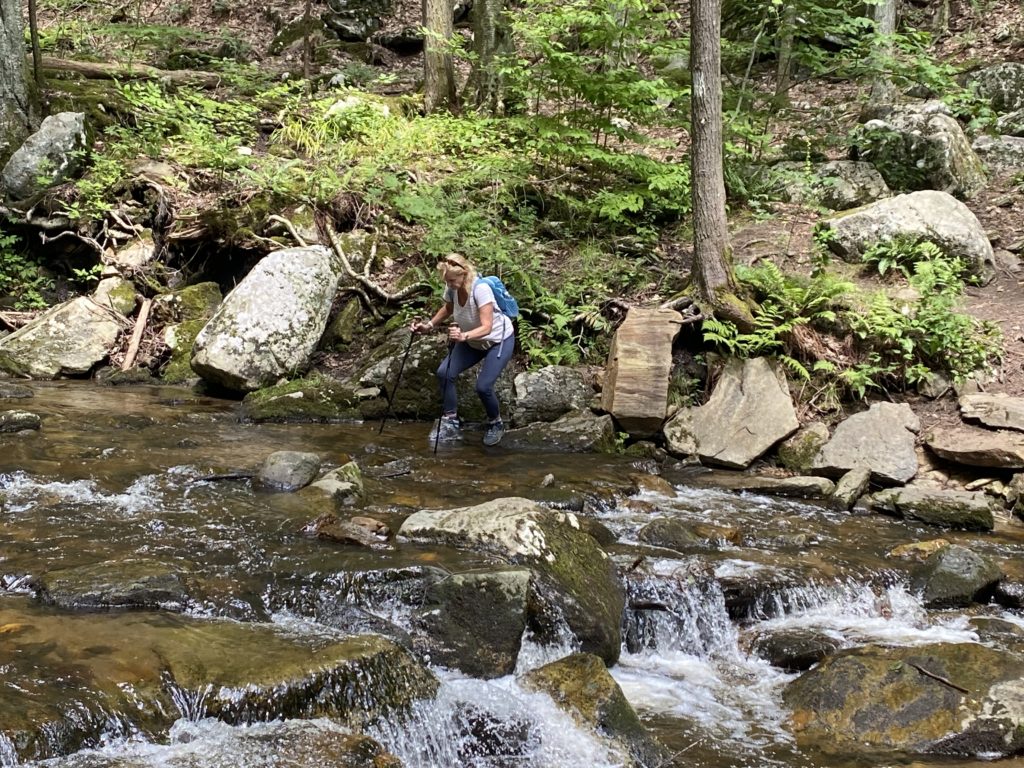So you’ve got your big-ticket items under control: tents, hiking footwear, backpack, sleeping bags and mats, and stoves. Beyond this basic hiking gear list a number of other items will help you stay safe and comfortable.
Backpacking Essential Equipment
Not all of the following items are used by all hikers all of the time. Backpacking gear selection depends on climate, season, length of hike, and hiking style, among other things. But the following list is a good place to start planning for a backpacking trip.
- For sleeping: In addition to tents, sleeping bags, and sleeping mats, use a ground cloth (sometimes called a “footprint” if it comes in the exact shape of your tent) to keep out water and prevent the tent bottom from tearing.
- For eating: In addition to a stove and fuel, hikers need a pot with lid, a pot grabber, a spoon, and a pot scrubber for cleaning up. A bowl or cup are useful too. Titanium equipment is expensive, but lightweight.
- For drinking: Backpackers must have water bottles, hydration systems, or water bags, as well as water filters, purifiers, or purification pills. Hydration packs such as those made by Platypus are popular and ergonomic, allowing you to drink while walking. The cheapest choice: empty plastic water bottles (but they can spring links and easily crack).
- For weather protection: Rain gear (at least a jacket) is usually necessary except perhaps in the hottest driest places (think Arizona in July). The choice of rain jacket, rain pants, poncho, or rain hat will depend on the climate. Gaiters can help keep mud and dirt out of your shoes.
- For warmth: For high mountains, create a layered hiking clothing system. Depending on the environment, it could include insulating long-johns, wool socks, thin wicking sock liners, gloves and hat, a lightweight jacket or pullover, and two sets of hiking clothes (usually shorts and T-shirts). For hot summer hiking, a couple T-shirts and of pairs of shorts should be all you need, with a super-light windbreaker or water-resistant jacket just in case.
- For camp comfort: This is a luxury item, but I like having a pair of flip flops. Even lightweight trekking shoes start to feel imprisoning after a big-miles day.
Useful Accessories for Backpackers
Each hiker has an idea of which pieces of outdoor equipment are essential and which are not. Here are some items found in many experienced hikers’ packs:
- Army knife or multi-use use tool (a mini is fine).
- Sun hat, sun screen, sun glasses, lip protection.
- A repair kit : The repair kit should include spare parts, (such as pack buckles and shoelaces), thick sewing needle and ultra strong thread, safety pins, cord, seam-seal compound (acts as glue), repair patches for tents, raingear, and duct tape. Pare it down to bits and pieces.
- First aid kit: A commercial kit can be modified (read: stripped down) to fit the hiker’s needs. Be sure prescription medicine is included.
- Walking sticks or trekking poles.

- Pouch or pack pocket to wear in front of pack for keeping personal daily items close to hand.
- GPS, map, compass; See-through plastic case to protect map (Zipper-locking bags are a lighter, but more fragile, option).
- A bandanna can be used for multiple tasks in camp (grabbing a pot); it can also be used as a bandage, a sweatband, and a handkerchief.
- Extra zipper-locking bags to keep things dry (especially electronics like cell phones and cameras; most cases aren’t waterproof).
- Stuff sacks for separating and organizing hiking equipment.
- Bug repellent.
Note that this is a starter list. In desert, high mountains, snow, and winter, other specialty equipment will be needed. Plus, every gear list becomes modified over time as a hiker’s skill level grows, hiking style and priorities change, and new gear is introduced by manufacturers.